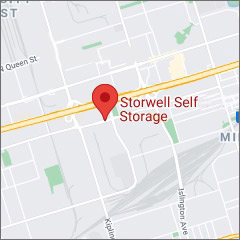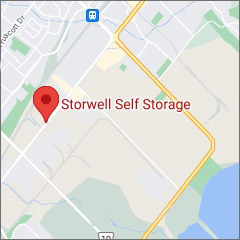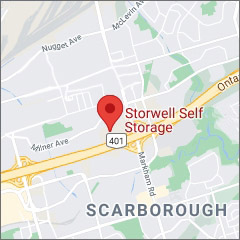A place for everything, and everything in its place.
A Totally-Not-Boring Blog About Storage
How to Pick the Best Storage Unit Size for Your Needs
Table of Contents
In today’s fast-paced world, the need for storage solutions has become increasingly important. Whether you’re downsizing, moving, or simply decluttering your living space, self-storage can provide a practical way to keep your belongings organized and accessible. However, one of the most common challenges people face when renting a storage unit is choosing the right size. Selecting an inappropriate unit can lead to wasted space and costs or, conversely, insufficient room for your belongings. This guide aims to help you navigate the decision-making process by providing insights into how to assess your storage needs, understand different unit sizes, and avoid common pitfalls.
1. Assessing Your Storage Needs
Evaluating the Types of Items to Be Stored
Before determining what size storage unit you need, it’s essential to evaluate the types of items you plan to store. Consider the following categories:

- Furniture: Large items such as couches, beds, and tables require more space and careful stacking.
- Boxes and Containers: If you have multiple boxes filled with clothes, books, or other belongings, think about their collective size.
- Seasonal Items: Holiday decorations, winter gear, or sports equipment may only need to be accessed periodically.
- Business Inventory: If you are storing supplies or equipment for your business, consider the volume and type of items.
Creating a comprehensive list of what you intend to store will give you a clearer picture of the space you need.
Determining the Volume and Size of Your Belongings
Next, assess the volume and size of the items. You might find it helpful to:
- Measure Larger Items: For bulky furniture, take measurements to ensure they will fit into the storage unit.
- Estimate Box Sizes: Consider using standard box sizes (small, medium, large) to get an approximate idea of how many boxes you have and their total volume.
- Think About Accessibility: Will you need to access certain items frequently? If so, plan for space around those items for easy retrieval.
By being thorough in this assessment, you can avoid the frustration of either overcrowding a small unit or wasting money on a larger space.
Considering Any Future Storage Requirements
It’s also essential to consider future needs. Ask yourself:
- Are you planning to acquire more items soon? For example, if you’re expecting a new child, you may need to store additional baby gear.
- Will you be storing items temporarily? If you anticipate needing storage for only a few months, you may want to consider a smaller unit or a short-term rental.
- Are you planning a move in the near future? If so, think about whether the items in storage will need to transition to a new home or if they can stay put.
Understanding your long-term storage needs can save you both time and money, allowing you to choose a unit that will serve you well in the future.
2. Understanding Common Storage Unit Sizes
Storage facilities typically offer various unit sizes, and knowing the dimensions can help you make an informed decision. Here are some of the most common mini storage sizes:
- 5×5 (25 sq. ft.): This unit is approximately the size of a small closet. It’s ideal for storing seasonal items, small furniture, boxes, or personal belongings like bicycles or garden tools. This size is often chosen by individuals who need temporary storage for a few months.
- 5×10 (50 sq. ft.): About the size of a walk-in closet, this unit can hold larger items such as a mattress, a small sofa, and several boxes. It’s suitable for individuals transitioning between homes or those looking to store larger personal items. This unit is also popular among college students needing to store dorm items during the summer.
- 10×10 (100 sq. ft.): Comparable to a small bedroom, this size is versatile and can accommodate the contents of a one-bedroom apartment, including appliances and furniture. It’s often the most popular choice for renters seeking a balance between space and affordability.
- 10×15 (150 sq. ft.): This unit can store the contents of a two-bedroom apartment or larger items like a small vehicle or substantial outdoor equipment. It’s ideal for families or businesses needing to store a significant amount of goods.
- 10×20 (200 sq. ft.): This larger size is suitable for families moving between homes or businesses that require extra space for inventory. It can comfortably accommodate the contents of a three-bedroom home or larger vehicles.
Understanding these sizes can help you visualize your storage needs and make an informed decision about what will work best for you.
3. Factors to Consider When Choosing a Size
A. Current vs. Future Needs
When selecting a storage unit, it’s crucial to differentiate between your current and potential future needs.
B. Temporary vs. Long-Term Storage
If you only need storage for a short period, you might opt for a smaller unit. However, if you anticipate needing the unit for an extended time, it’s wise to consider a larger space that can accommodate any new items that may come up.
C. Access Frequency
How often do you plan to access your items? If you foresee needing to retrieve items regularly, it’s essential to consider not just the size but also the layout of the unit. Units that are too full can make it challenging to reach specific items, leading to frustration.
D. Type of Items
Different items have varying storage requirements:
- Fragile Items: If you’re storing delicate items like glassware or antiques, you’ll need to think about how to pack them safely. This might require a larger unit to ensure adequate space for protective packing materials. For peace of mind, consider using shelves.
E. Budget Constraints
Finally, consider your budget. While a 10×10 unit is often an affordable option, it’s essential to ensure that any unit you choose fits within your budget.
- Cost Considerations: Larger units typically cost more, so weigh the price against your needs. Many storage facilities offer promotions or discounts for longer rental agreements, so inquire about any available deals.
- Location Impact on Price: The location of the storage facility can also affect pricing. Facilities in high-demand areas may charge more, so balancing convenience with cost is key.
4. Comparing Different Storage Unit Sizes
Understanding the advantages and limitations of various storage unit sizes can help clarify your decision. Here’s a breakdown of the most common sizes:
5×5 Unit
- Best For: Small items, seasonal gear, and a few boxes.
- Pros: Low cost, perfect for temporary storage or minimal items.
- Cons: Limited space; not ideal for large furniture.
5×10 Unit
- Best For: A small apartment’s worth of items, including mattresses and small furniture.
- Pros: More room than a 5×5, affordable for students and small movers.
- Cons: Still limited for larger items or extensive collections.
10×10 Unit
- Best For: Contents of a one-bedroom apartment or substantial business inventory.
- Pros: Versatile, commonly used, good balance of size and price.
- Cons: Can become cluttered if not organized well.
10×15 Unit
- Best For: Families needing to store furniture and equipment or for seasonal businesses.
- Pros: Accommodates larger items; good for medium-term storage.
- Cons: Higher cost than smaller units, so ensure you need the space.
10×20 Unit
- Best For: Large households or businesses with significant inventory.
- Pros: Spacious, perfect for moving or long-term storage needs.
- Cons: Can be costly; may be more space than necessary for smaller moves.
5. Tips for Measuring and Organizing Your Items
Once you’ve determined your storage needs and selected a size, effective organization becomes crucial. Here are some practical tips:
Measuring Belongings
Before moving items into the unit, take the time to measure larger furniture pieces and bulky items. Use a tape measure to ensure they will fit through the door of the storage unit without difficulty.
Organizing Items for Efficient Use of Space
- Plan Your Layout: Before you begin packing the unit, visualize how you want to arrange items. Place frequently accessed items near the front and stack boxes carefully to maximize vertical space.
- Use Shelving Units: If your storage facility permits, consider using shelving to create additional space. This can help you keep items off the floor and more organized.
Using Inventory Lists
Keeping an inventory list is essential for effective organization.
- What to Include: Document each item you place in storage, and keep track of box contents. This will save time when retrieving specific items later.
- Label Boxes: Clearly label each box with its contents and the date it was stored. Color-coding can also be an effective strategy.
6. Common Mistakes to Avoid
When renting a storage unit, there are several pitfalls to watch out for:
Overestimating or Underestimating Storage Needs
One of the most common mistakes is choosing a unit that is either too large or too small. Overestimating can lead to wasted costs, while underestimating can result in overcrowding.
Failing to Consider Accessibility and Layout
Another mistake is not considering how easy it will be to access items in the unit. If you stack everything tightly without a plan, it can become cumbersome to retrieve specific items.
Not Planning for Seasonal Changes or Future Acquisitions
People often forget to account for future storage needs. If you plan to acquire more belongings or if your storage needs will change seasonally, opt for a unit that can accommodate these fluctuations.
7. Conclusion
Choosing the right storage unit size is a crucial step in ensuring that your belongings are kept safe, organized, and accessible. By carefully assessing your storage needs, understanding the various unit sizes available, and considering important factors such as future needs, access frequency, and budget, you can make a well-informed decision that suits your situation.
Remember to take your time during the assessment process, and don’t hesitate to ask storage facility staff for guidance if needed. Ultimately, the goal is to find a unit that meets your needs and allows you to focus on what matters most in your life. With the right storage unit, you can enjoy peace of mind knowing that your belongings are secure and organized.



